The Lewis and Clark Expedition, also known as the Corps of Discovery, was one of the most significant exploration missions in American history. Led by Meriwether Lewis and William Clark, the expedition set out in 1804 to explore the vast uncharted territory acquired through the Louisiana Purchase. The expedition’s primary goal was to map the lands west of the Mississippi River, establish trade routes, and assert American sovereignty over Native American tribes in the region.
Read Also : The Battle of the Bulge (1944-1945): Nazi Germany’s Last Major Offensive
The journey took over two years, from 1804 to 1806, and covered approximately 8,000 miles. The expedition crossed the Rocky Mountains, navigated the Columbia River, and reached the Pacific Ocean, providing valuable information about the geography, flora, fauna, and native peoples of the American West. This article will delve into the details of the expedition, from its origins to its lasting impact on the history of the United States.
The Political and Economic Motivations Behind the Expedition
The Lewis and Clark Expedition was not merely a scientific venture; it was deeply tied to the political and economic interests of the young United States. Following the Louisiana Purchase in 1803, which doubled the size of the country, President Thomas Jefferson sought to assert American control over the newly acquired territories. The expedition was also driven by the desire to expand trade routes, particularly the possibility of a Northwest Passage that would link the Atlantic and Pacific Oceans.
The Louisiana Purchase: Expanding the Nation’s Borders
The Louisiana Purchase was one of the most significant territorial expansions in U.S. history, adding over 800,000 square miles of land to the country. Purchased from France for $15 million, the vast territory stretched from the Mississippi River to the Rocky Mountains and from the Gulf of Mexico to Canada. However, much of this land was uncharted and unknown to American settlers and government officials.
President Thomas Jefferson, who had long been interested in western exploration, saw the purchase as an opportunity to secure American control over the continent. He believed that exploring and mapping the new territory would help legitimize the U.S. claim to the land, particularly in the face of competing interests from European powers like Spain and Britain. Additionally, Jefferson hoped the expedition would establish American dominance in the lucrative fur trade and open new markets for commerce.
The acquisition of the Louisiana Territory was also strategic for national security. By controlling the land west of the Mississippi, the U.S. could prevent European powers from encroaching on its borders and potentially threatening its sovereignty. The Lewis and Clark Expedition was a key component of this larger geopolitical strategy.
Jefferson’s Vision for Exploration
President Jefferson was a man of the Enlightenment, deeply fascinated by science, geography, and natural history. He envisioned the Lewis and Clark Expedition as an opportunity to gather scientific knowledge about the western territories. Jefferson instructed Meriwether Lewis, his personal secretary and the expedition’s leader, to document the region’s plants, animals, and minerals, as well as to map the rivers and mountains.
Jefferson also tasked Lewis and Clark with establishing relations with Native American tribes, with the goal of opening up trade and asserting U.S. sovereignty over the region. He emphasized the importance of diplomacy, instructing the explorers to communicate the United States’ peaceful intentions while also asserting its authority over the lands acquired through the Louisiana Purchase.
In Jefferson’s mind, the expedition was more than a political mission—it was a quest for knowledge that would expand the nation’s understanding of the natural world and its place within it. He hoped that the data collected by Lewis and Clark would contribute to scientific advancement and provide valuable insights into the resources and potential of the western territories.
Economic Interests and the Fur Trade
Another driving factor behind the Lewis and Clark Expedition was the desire to expand the American fur trade. The western territories were rich in fur-bearing animals, and the fur trade had already become a major economic driver in North America. European and American traders sought to capitalize on the demand for beaver pelts, which were highly valued in Europe for making hats and clothing.
By exploring the western territories, Jefferson hoped to establish new trade routes that would allow American traders to compete with their European counterparts. The possibility of finding a Northwest Passage—a water route that would connect the Atlantic and Pacific Oceans—was especially appealing, as it would provide a direct link to Asian markets.
Though the Northwest Passage proved elusive, the expedition helped open up new regions for fur trading, particularly in the Pacific Northwest. The relationships established with Native American tribes during the journey also facilitated the expansion of trade networks, benefiting both American traders and indigenous peoples.
Establishing American Sovereignty
The Lewis and Clark Expedition was also a key part of Jefferson’s broader strategy to assert American sovereignty over the western territories. At the time, European powers, particularly Spain and Britain, still maintained interests in North America and could potentially challenge U.S. control over the Louisiana Territory. By sending an official government expedition into the region, Jefferson aimed to solidify the United States’ claim to the land and prevent foreign encroachments.
Throughout the journey, Lewis and Clark were instructed to make contact with Native American tribes and assert that the lands they inhabited were now part of the United States. They carried with them peace medals, American flags, and letters of introduction from President Jefferson, all intended to reinforce the idea that the United States was the new sovereign power in the region.
This assertion of sovereignty was not without its challenges, as many Native American tribes had longstanding relationships with European traders and were skeptical of the Americans’ intentions. Nevertheless, the expedition helped lay the groundwork for future U.S. expansion and settlement in the West.
Geopolitical Competition with European Powers
In addition to asserting sovereignty over the Louisiana Territory, the Lewis and Clark Expedition was part of a larger geopolitical competition with European powers for control of North America. Spain, Britain, and Russia all had interests in the western territories, and Jefferson was determined to prevent them from expanding their influence into lands claimed by the United States.
The expedition served as a demonstration of American presence in the West, signaling to European powers that the United States intended to defend its claims. This was particularly important in the Pacific Northwest, where British and Russian traders were already active. By reaching the Pacific Ocean and mapping the Columbia River, Lewis and Clark helped establish an American foothold in the region, paving the way for future territorial claims.
The Journey Begins: From St. Louis to the Great Plains
The Lewis and Clark Expedition officially began on May 14, 1804, when the Corps of Discovery set out from Camp Dubois near St. Louis, Missouri. The group consisted of about 40 men, including soldiers, hunters, interpreters, and guides. They traveled up the Missouri River, which served as the main artery of their journey westward. The early stages of the expedition were focused on navigating the river, establishing camps, and making contact with Native American tribes along the way.
Preparing for the Expedition
Before setting out, Lewis and Clark spent months preparing for the journey. Meriwether Lewis traveled to Philadelphia to study with leading scientists and learn about botany, zoology, and medicine. He also acquired supplies for the expedition, including weapons, tools, and trade goods. Clark, meanwhile, was responsible for recruiting men for the Corps of Discovery, selecting individuals with a variety of skills, including carpentry, hunting, and blacksmithing.
The preparation phase was critical to the success of the expedition, as it ensured that the Corps of Discovery was well-equipped for the challenges they would face. The team also underwent extensive training in navigation, map-making, and survival techniques, all of which would prove essential as they ventured into the unknown.
The Missouri River: The First Leg of the Journey
The Missouri River was the lifeline of the Lewis and Clark Expedition, serving as the main route for the Corps of Discovery as they traveled westward. The men navigated the river using a keelboat and two smaller pirogues, carrying supplies and equipment. The journey up the river was slow and laborious, as the men had to contend with strong currents, shifting sandbars, and frequent portages.
As they traveled, Lewis and Clark kept detailed journals, recording their observations of the landscape, wildlife, and Native American tribes they encountered. These journals provide a valuable record of the expedition and offer insights into the challenges and discoveries the Corps of Discovery experienced along the way.
The Missouri River also served as a critical point of contact with Native American tribes. Lewis and Clark held councils with several tribes, presenting them with gifts and peace medals as tokens of goodwill. These meetings were an important aspect of the expedition, as they helped establish diplomatic relations and gather information about the terrain ahead.
Encounters with Native American Tribes
Throughout the expedition, Lewis and Clark encountered numerous Native American tribes, each with its own culture, language, and way of life. These interactions were often cordial, with the Corps of Discovery exchanging gifts and establishing friendly relations. However, there were also moments of tension, particularly as the expedition entered territories where European traders had already established a presence.
One of the most important encounters occurred with the Mandan and Hidatsa tribes, who lived along the Missouri River in what is now North Dakota. The Corps of Discovery spent the winter of 1804-1805 at Fort Mandan, where they built relationships with the local tribes and gathered valuable information about the route ahead. It was here that they met Sacagawea, a Shoshone woman who would play a crucial role in the success of the expedition.
While many of the interactions with Native American tribes were peaceful, the expedition also faced the potential for conflict. The presence of European traders in the region created competing interests, and some tribes were wary of the Americans’ intentions. Lewis and Clark had to navigate these complex dynamics carefully, balancing diplomacy with the need to assert American sovereignty over the newly acquired territories.
Sacagawea Joins the Expedition
One of the most famous figures associated with the Lewis and Clark Expedition is Sacagawea, a Shoshone woman who served as an interpreter and guide. Sacagawea, who had been captured by the Hidatsa and later married to a French-Canadian fur trader, joined the expedition at Fort Mandan along with her husband, Toussaint Charbonneau. Her knowledge of the terrain, languages, and customs of the Native American tribes proved invaluable to the success of the mission.
Sacagawea’s presence also helped facilitate peaceful relations with other Native American tribes, as she was seen as a symbol of the expedition’s peaceful intentions. Her contributions to the expedition have been widely recognized, and she remains an iconic figure in American history.
Crossing the Great Plains
After leaving Fort Mandan in the spring of 1805, the Corps of Discovery continued westward across the Great Plains. This section of the journey was marked by encounters with vast herds of bison, as well as challenges posed by the rugged terrain and harsh weather conditions. The men faced intense heat, thunderstorms, and scarcity of food as they made their way through the plains.
Despite these difficulties, the expedition continued to make progress, documenting the flora and fauna of the region and mapping the rivers and mountains they encountered. The journey across the Great Plains was a test of endurance for the men of the Corps of Discovery, but it also provided them with valuable insights into the natural world of the American West.
Reaching the Rocky Mountains and the Pacific Ocean
As the expedition moved westward, the terrain became increasingly challenging. The Corps of Discovery had to navigate the rugged Rocky Mountains, cross treacherous rivers, and endure harsh weather conditions. Despite these obstacles, the expedition pressed on, driven by the goal of reaching the Pacific Ocean.
Crossing the Rocky Mountains
The Rocky Mountains presented one of the most daunting challenges of the expedition. The Corps of Discovery had to navigate steep mountain passes, contend with cold temperatures, and find food in an unforgiving environment. The men often went hungry, and their progress was slow as they struggled to find a safe route through the mountains.
Sacagawea played a crucial role during this phase of the journey, helping the expedition find a Shoshone tribe that provided them with horses to cross the mountains. Without her assistance, it is unlikely that the expedition would have been able to complete its journey to the Pacific.
Despite the hardships, the crossing of the Rocky Mountains was a significant achievement for the Corps of Discovery. It demonstrated their resilience and determination in the face of overwhelming challenges and brought them closer to their ultimate goal.
Reaching the Columbia River
After successfully crossing the Rocky Mountains, the Corps of Discovery reached the Columbia River, which would serve as their final route to the Pacific Ocean. The Columbia River was a vital waterway, and the expedition navigated its rapids and waterfalls as they made their way westward.
The journey down the Columbia River was not without its dangers. The river’s swift currents and rocky shoals posed a constant threat, and the men had to remain vigilant to avoid capsizing. Nevertheless, the expedition made steady progress, and by November 1805, they had reached the Pacific Ocean.
The sight of the ocean was a momentous occasion for the Corps of Discovery. After more than a year and a half of travel, they had finally achieved their goal of reaching the western edge of the continent. The men celebrated their success, but they also knew that the journey was far from over, as they would soon have to make the long trek back to St. Louis.
Establishing Fort Clatsop
Upon reaching the Pacific Ocean, the Corps of Discovery established a winter camp called Fort Clatsop, near present-day Astoria, Oregon. The men spent the winter of 1805-1806 at the fort, where they hunted, repaired equipment, and prepared for the journey home. The weather was harsh, with constant rain and cold temperatures, but the men persevered.
During their time at Fort Clatsop, Lewis and Clark continued to document their observations of the region, including the plants, animals, and Native American tribes they encountered. The fort served as a base of operations for the expedition as they explored the surrounding area and gathered information that would be valuable for future expeditions and settlers.
Fort Clatsop was also a place of diplomacy, as the expedition established relations with the local Chinook and Clatsop tribes. These interactions were crucial in ensuring the expedition’s survival during the winter months and provided valuable knowledge about the resources and geography of the Pacific Northwest.
The Return Journey
In March 1806, the Corps of Discovery began their return journey to St. Louis. The trip home was faster than the outbound journey, as the men were now familiar with the terrain and had established trade and diplomatic relations with many of the Native American tribes along the way. However, the return journey was not without its challenges, as the men continued to face harsh weather and difficult terrain.
One of the most significant challenges of the return journey was navigating the Missouri River, which had become swollen with spring runoff. The men had to contend with strong currents and debris as they made their way back to St. Louis. Despite these difficulties, the expedition successfully completed their journey, arriving back in St. Louis in September 1806.
The Legacy of the Lewis and Clark Expedition
The Lewis and Clark Expedition had a profound impact on the United States, both in terms of its immediate accomplishments and its lasting legacy. The expedition provided valuable information about the geography, flora, fauna, and native peoples of the American West. It also helped establish American sovereignty over the newly acquired Louisiana Territory and opened up new opportunities for trade and settlement.
The legacy of the expedition is also reflected in its influence on American culture and identity. The Lewis and Clark Expedition has become a symbol of the spirit of exploration and adventure that has defined the American frontier. It remains an enduring example of the courage, determination, and ingenuity that have shaped the nation’s history.
Conclusion: The Enduring Legacy of Lewis and Clark
The Lewis and Clark Expedition stands as one of the most remarkable achievements in American history, symbolizing the spirit of exploration and the expansion of the young nation. Through their perseverance, courage, and determination, Lewis, Clark, and the Corps of Discovery charted a vast and unknown land, paving the way for the westward expansion of the United States. Their journey contributed to a greater understanding of the American West, established diplomatic relations with Native American tribes, and opened new opportunities for trade and settlement.
The legacy of the expedition is multifaceted. It not only fulfilled the political and economic objectives set forth by President Jefferson but also enriched the scientific knowledge of the natural world. The expedition’s detailed maps, journals, and observations continue to be invaluable historical records. Lewis and Clark’s journey also set a precedent for future explorers, embodying the nation’s commitment to discovery and the pursuit of knowledge.
Today, the Lewis and Clark Expedition remains a symbol of American ingenuity and determination, with its story inspiring generations of adventurers, historians, and scholars. It serves as a reminder of the challenges faced during the early years of the nation’s expansion and the profound impact that exploration has had on the shaping of American history.
FAQ
What was the purpose of the Lewis and Clark Expedition?
The Lewis and Clark Expedition was commissioned by President Thomas Jefferson to explore the newly acquired Louisiana Territory, establish trade routes, assert American sovereignty, and gather scientific data about the region.
Who were the leaders of the Lewis and Clark Expedition?
The expedition was led by Meriwether Lewis and William Clark, who were appointed by President Jefferson to explore the western territories and map the land.
What role did Sacagawea play in the expedition?
Sacagawea, a Shoshone woman, served as an interpreter and guide for the expedition. Her knowledge of the terrain, languages, and Native American tribes was invaluable to the success of the mission.
What was the significance of the Louisiana Purchase?
The Louisiana Purchase doubled the size of the United States, adding over 800,000 square miles of territory. The purchase was significant for expanding U.S. borders, securing control over key trade routes, and establishing American sovereignty in the West.
What was the outcome of the Lewis and Clark Expedition?
The expedition successfully reached the Pacific Ocean and provided valuable information about the geography and resources of the American West. It also helped establish American control over the western territories and paved the way for future settlement and expansion.
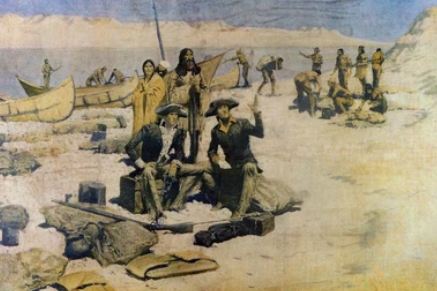

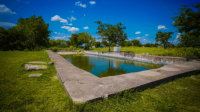
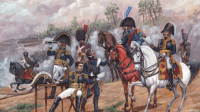
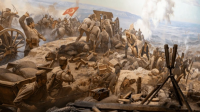
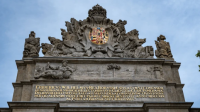
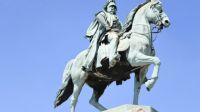
It is best to take part in a contest for one of the best blogs on the web. I will recommend this site!
I do not even know how I ended up here, but I thought this post was good. I don’t know who you are but definitely you’re going to a famous blogger if you aren’t already 😉 Cheers!
My partner and I absolutely love your blog and find a lot of your post’s to be exactly what I’m looking for. Do you offer guest writers to write content for yourself? I wouldn’t mind writing a post or elaborating on a number of the subjects you write regarding here. Again, awesome website!
I haven抰 checked in here for a while as I thought it was getting boring, but the last few posts are great quality so I guess I will add you back to my daily bloglist. You deserve it my friend 🙂
From my notice, shopping for consumer electronics online can for sure be expensive, nonetheless there are some guidelines that you can use to acquire the best discounts. There are generally ways to locate discount promotions that could make one to have the best electronics products at the lowest prices. Interesting blog post.
I’d like to find out more? I’d love to find out more details.
hello!,I love your writing so so much! percentage we
communicate more about your post on AOL? I require an expert on this space to unravel my problem.
May be that is you! Looking ahead to peer you.
The articles you write help me a lot and I like the topic http://www.hairstylesvip.com